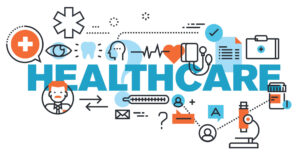There has been a flood of information (and misinformation) about the Paycheck Protection Program (PPP) included in the Coronavirus Aid, Relief and Economic Security (CARES) Act that provides eligible small businesses with borrowing opportunities to weather the current COVID-19 economic storm (see related posts below).
Receiving less attention at the current time is another program contemplated under the CARES Act. The Act’s Mid-Sized Business Loan Program is slated to provide $454 billion into the economy by advancing monies to the Federal Reserve emergency lending facilities and directing the U.S. Department of the Treasury to implement a Federal Reserve program to provide financing to banks and other lenders that make direct loans to mid-sized businesses. Note that this loan program is also open to non-profit organizations.
Specifically, the “Coronavirus Economic Stabilization Act” (CESA) found in Title IV of the CARES Act, provides $500 billion to the U.S. Department of the Treasury’s Exchange Stabilization Fund to make loans, loan guarantees and other investments to provide liquidity to eligible businesses, states and municipalities that have been or expect to be affected by the Coronavirus (COVID-19) pandemic. Of that total, $454 billion (as well as any amounts available but not used for direct lending programs earmarked for the airline and national security industries) will be made available for loans, loan guarantees and investments in support of the emergency lending facilities established by the Federal Reserve.
The CARES Act directs Treasury to “endeavor” to implement a program through the Federal Reserve to provide financing to banks and other lenders that make direct loans to mid-sized businesses. The programs available under Title IV will be entirely new and are separate from the federally-guaranteed loans offered by the Small Business Administration under Title I of the CARES Act.
The lenders of these monies are likely to be comprised primarily of larger commercial lenders. This proposed mid-sized business relief program will, in effect, allow for eligible businesses to obtain much-needed economic assistance at favorable rates and terms. Because the CARES Act is unclear on many key points, the specific requirements and benefits of the mid-size lending program are likely to be set forth in the term sheets issued by the Federal Reserve and Treasury, as they establish facilities or programs to provide relief to mid-size businesses.
While implementation directives and other administrative or regulatory guidance remain open, the CARES Act itself establishes eligibility requirements and terms and conditions for the program. It also sets forth some preliminary guidelines and definitions to aid organizations contemplating the loans as a means to address current operating needs. A summary of the details currently known from the Act are noted below.
Eligibility
The recipients of the loans must be “mid-sized” businesses and non-profit organizations. By definition, the Act limits the lending of these amounts to eligible businesses within between 500 and 10,000 employees. An “eligible” business is a United States business that has “not otherwise received adequate economic relief in the form of loans or loan guarantees provided under this Act.”
The CARES Act defines “employees” by cross reference to the National Labor Relations Act definition of that term, but it is unclear how that definition will be applied here with regard to making a determination on how to properly aggregate employees among business entities under common control. Given the purpose of the lending program contemplated by the CARES Act, it is not expected that the “affiliation” regulations promulgated by the Small Business Administration will limit eligibility for this program.
An eligible mid-sized business must meet all four of the following conditions:
- be incorporated under the laws of the United States or created or otherwise organized within the United States,
- be domiciled within the United States,
- have significant operations in the United States, and
- have a majority of its employees based within the United States.
The recipient must make a “good faith certification” that “uncertainty of economic conditions as of the date of the application makes necessary the loan request to support ongoing operations of the Recipient.” These requirements mirror those required for obtaining loans from the Paycheck Protection Program loans available to small businesses. The recipient cannot be a debtor in a bankruptcy proceeding.
Terms and Conditions
The interest rate to recipients of mid-sized business loans will be capped at 2% per annum. In addition, for the first six months after any such direct loan is made, or for a longer period if the Secretary of the Treasury so directs, “no principal or interest is due or payable.”
The CARES Act does not yet set a maximum loan amount or a maximum maturity date. Unlike the loans available under the Paycheck Protection Program, the loans made under the mid-sized business loan program are NOT eligible for forgiveness.
The CARES Act does not specify what collateral (if any) will be required to secure the loans. Lending/underwriting requirements may range from encumbrance of traditional collateral to the issuance of preferred shares, common equity or warrants in connection with advances of loans. In some circumstances, loans may be advanced on an unsecured basis. Loans made under the Paycheck Protection Program generally require no collateral.
Certifications/Representations
The recipient must provide a “good faith certification” of the following:
- That those funds that it receives will be used to retain at least 90% of its workforce (currently expected to be measured as of time of loan application) at full compensation and benefits, until September 30, 2020.
- That it “intends to restore not less than 90% of the workforce of the Recipient Borrower that existed as of February 1, 2020, and to restore all compensation and benefits to the workers of the Recipient no later than four months after the termination” of the declaration of a public health emergency.
- That it will not “pay dividends with respect to the common stock of the eligible business, or repurchase an equity security that is listed on a national securities exchange of the recipient or any parent company for the recipient while the direct loan is outstanding, except to the extent required under a contractual obligation that is in effect as the date of enforcement of this Act.”
- That it will not outsource or send jobs offshore for the term of the loan and two years after completing repayment of the loan.
- That it will not abrogate existing collective bargaining agreements for the term of the loan and two years after completing repayment of the loan.
- That it will remain neutral in any union organizing effort for the term of the loan.
Finally, the recipient of these loans must comply with certain restrictions related to compensation of officers and employees from dates of execution of the loan to the date one year after the loan is no longer outstanding. These restrictions include:
- “[N]o officer or employee…whose total compensation exceeded $425,000 in calendar year 2019 (other than an employee whose compensation is determined through an existing collective bargaining agreement entered into prior to March 1, 2020)” may receive compensation that exceeds their 2019 compensation, or “[R]eceive from the eligible business severance pay or other benefits upon termination of employment with the eligible business which exceeds twice the maximum total compensation received by the officer or employee from the eligible business in calendar year 2019.”
- “[T]otal compensation” is defined to include “salary, bonuses, awards of stock, and other financial benefits.”
- Any employee or officer whose total compensation would exceed $3 million under this provision cannot receive more than 50% of that compensation in excess of $3 million.
Public Disclosure
This program is subject to extensive public disclosure as to participants, terms and conditions. This disclosure is intended to ensure public oversight, through political scrutiny by the media, Congress and executive branch agencies.
Grossman Yanak & Ford LLP will continue to monitor developments as they occur and provide additional information for our mid-sized business clients. In the interim, should you have questions or comments, please contact Bob Grossman or Don Johnston at 412-338-9300.
Related Posts
Comparing Small Business Relief Packages
SBA Issues Additional Guidance for Paycheck Protection Program Loans
Economic Injury Disaster Loans (EIDL) Under the CARES Act
Paycheck Protection Program Loans (PPP) Available through the CARES Act





